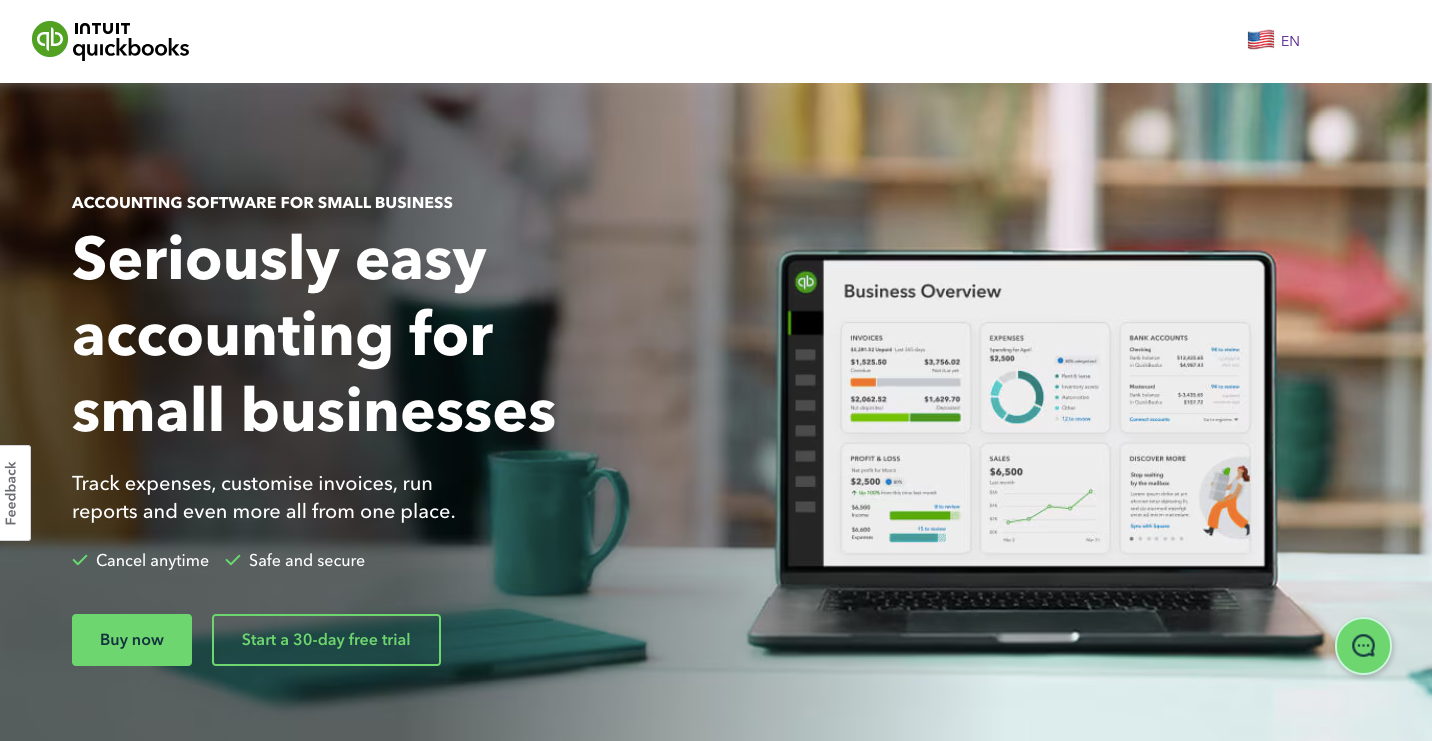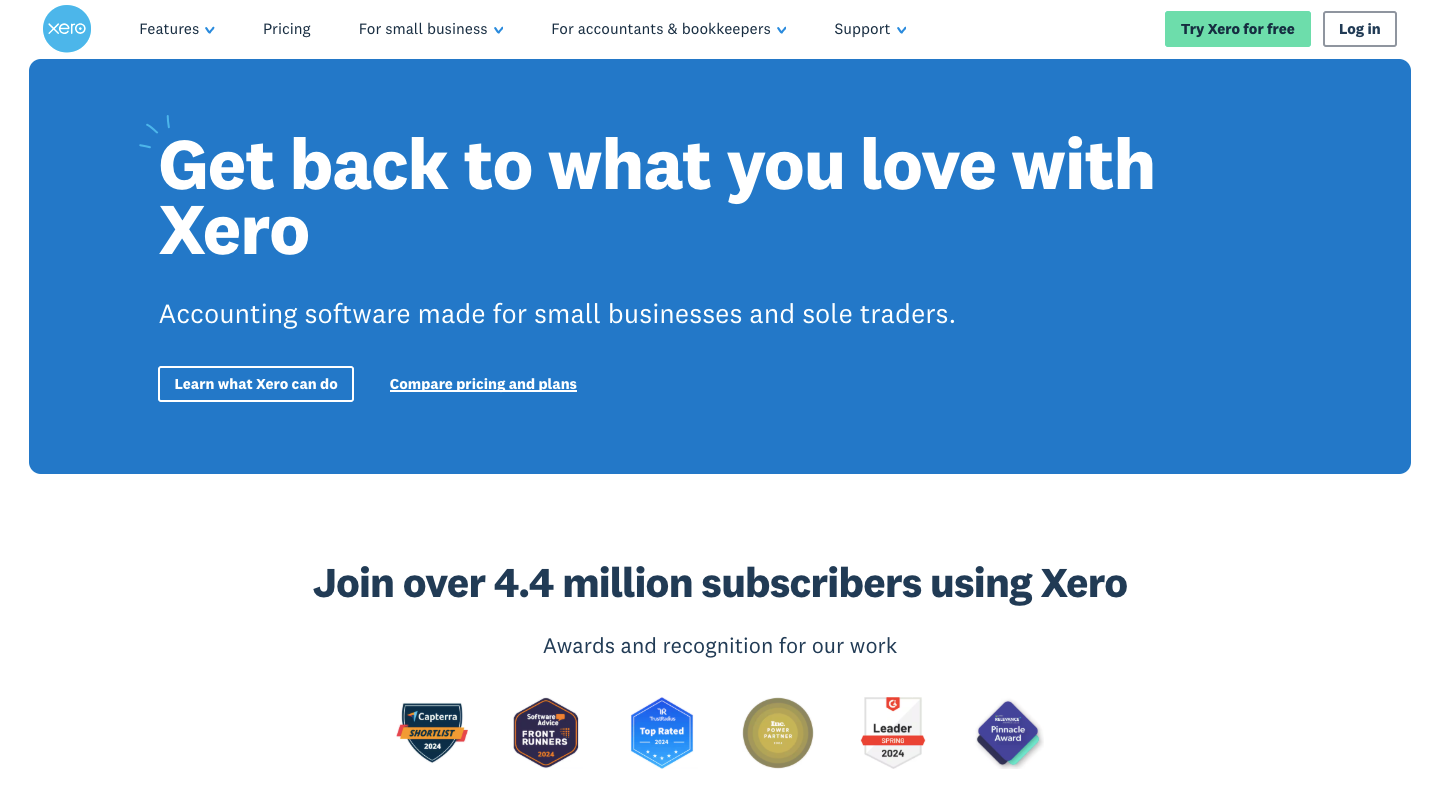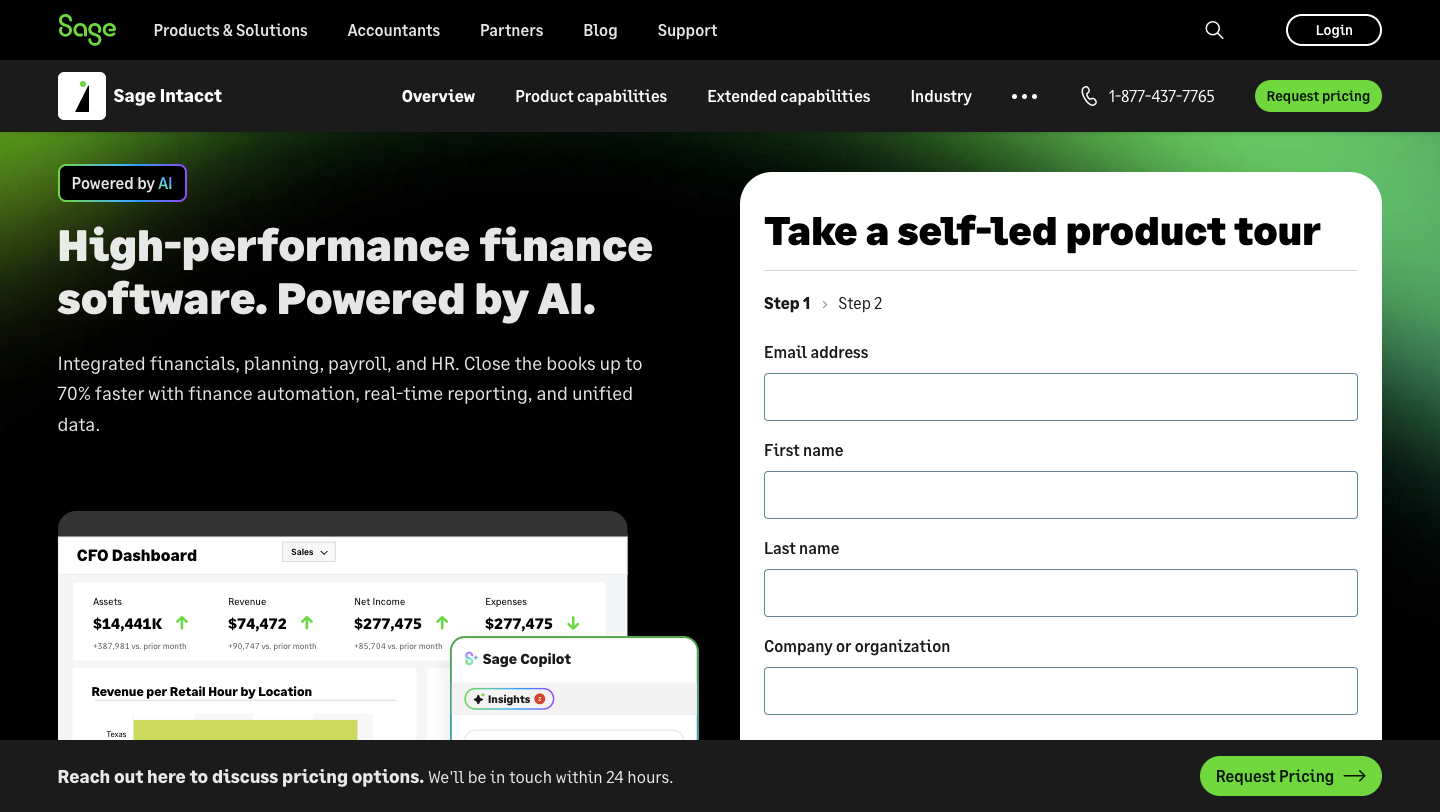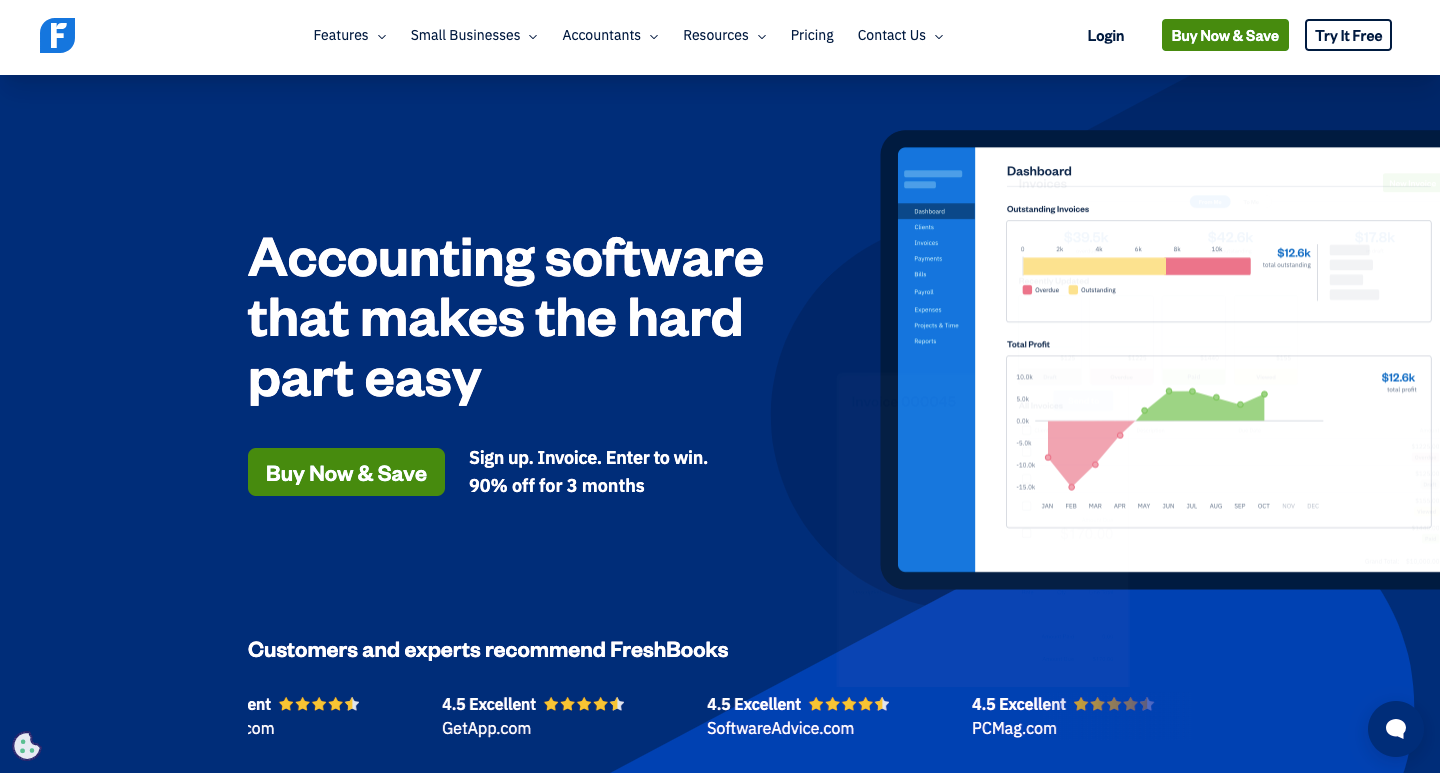MSP Accounting
Best Accounting Software for MSPs: Top Solutions for Streamlined Financial Management
.png)
According to Statista, 64% of small businesses in the US use accounting software in their operations.
For Managed Service Providers (MSPs), however, financial management goes far beyond basic accounting or bookkeeping. With revenue streams coming from recurring contracts, project work, and hourly services, MSPs need systems that deliver accuracy, visibility, and scalability at every stage.
Modern accounting platforms do more than just record income and expenses; they also provide valuable insights into financial performance. The right solution automates invoicing, tracks profitability in real time, simplifies tax preparation, and keeps your business audit-ready.
In this article, we’ll look at the best accounting software for MSPs, including automated invoicing, revenue tracking, and deposit reconciliation. We will also discuss how connecting your accounting and billing systems can improve accuracy, efficiency, and long-term growth.
{{toc}}
What Is Accounting Software for MSPs?
Accounting software is the financial backbone for an MSP. The software centralizes the tracking of revenue, expenses, invoices, payments, payroll, taxes, and other financial data into a unified system.
This ensures that every financial activity is recorded, organized, and accessible, providing MSP business leaders with a clear picture of the business's performance at all times.
While generic accounting tools can handle basic bookkeeping, MSPs have unique needs that demand more specialized capabilities.
The right MSP-focused accounting platform integrates directly with billing software and Professional Services Automation (PSA) tools. It automates recurring processes, supports multiple diverse billing models (such as managed recurring service contracts, one-time projects, and usage-based fees), without letting revenue slip through the cracks. It also ensures regulatory compliance and keeps financial records audit-ready.
MSP-focused accounting platforms go further. They offer real-time dashboards to monitor cash flow, profitability margins, and client payment behavior at a glance. Additionally, audit trails facilitate compliance.
Instead of manually sifting through spreadsheets, you can instantly see which client contracts yield the best margins and where operational costs are rising. You can also identify which clients regularly pay late.
That visibility supports smarter pricing, better resource allocation, and confident long-term planning.
9 Key Features to Look for in MSP Accounting Software
Choosing the right accounting software means focusing on the features that will have the most significant impact on efficiency, accuracy, and growth.
Here are the most essential software features to prioritize:
1. Automated Invoicing and Payment Tracking:
Automation cuts duplicate payments by 98%. Look for an accounting software that allows you to create and automate invoice creation and delivery.
You should be able to see payment statuses instantly, send payments, and maintain a steady cash flow with faster payments and fewer missed bills.
2. Bank Reconciliation:
Finance teams can spend hundreds of hours each year manually reconciling payments and accounts.
Modern accounting platforms automate this process by linking deposits to invoices, categorizing expenses, and flagging irregular activity. For MSPs handling multiple clients and services, this means real-time cash flow tracking, accurate revenue records, and audit-ready books.
3. Expense and Vendor Management:
A robust accounting platform should do more than track costs. It should manage vendors, automate purchase orders, and match POs (purchase orders) with receipts and invoices. Expenses can be automatically sorted by client, project, or department, giving you a clear view of profitability.
Features such as automated purchase orders (POs), matching POs with receipts and invoices, and real-time spend tracking help you avoid both underbilling and overbilling. These features collectively help maintain complete financial visibility.
4. Multi-Entity and Multi-Currency Support:
If your MSP serves multiple regions or international clients, you need accounting software that includes multi-entity and multi-currency features.
Features should include localized invoicing, automated tax compliance, and real-time currency conversion. This ensures professional service delivery while maintaining compliance and profitability as you expand into new markets.
5. Tax Compliance and Payroll Integration:
The U.S. has over 11,000 tax jurisdictions, each with its own unique rules and rates, making compliance particularly complex. A reliable accounting software should handle this automatically by applying the correct tax rates and staying updated as regulations change. It should also seamlessly manage payroll tasks, including wages, benefits, and deductions.
Tax and payroll automation reduces errors, lowers compliance risks, and ensures accurate processes and records.
6. Custom Reporting and Dashboards:
MSPs need clear visibility into financial health. Custom reports and dashboards should track revenue, margins, receivables, and cash flow in real time. Role-based dashboards with drill-down features enable seamless transition from high-level insights to detailed data, facilitating improved pricing, service delivery, and planning.
7. Seamless MSP-tools Integration:
Over 75% of MSPs say integration saves significant time. Choose accounting software that connects directly with your PSA software, billing platform, and payment gateways.
Strong APIs and pre-built connectors with systems like ConnectWise, Autotask, FlexPoint, and QuickBooks ensure workflows are fully automated. These connections eliminate data silos, automate manual tasks, minimize errors, and streamline invoicing and payment reconciliation.
8. Cloud-Based Access and Security:
60% of business data is now stored in the cloud, and 91% of organizations say it helps them meet compliance requirements more easily.
Select solutions that incorporate robust security features, such as role-based permissions, multi-factor authentication, and end-to-end encryption.
Compliance features should support SOC 2 Type II, HIPAA, SAQ-A, and PCI DSS. Automated backups, disaster recovery, and secure access controls safeguard sensitive financial data, enabling teams to work securely from anywhere.
9. Scalability and Ease of Use:
Choose an MSP accounting software that grows with your business. Whether you’re a small startup or a multi-location enterprise, look for a software that offers flexible user licenses, multi-entity management, and the ability to handle more transactions as your client base expands.
Modular features let you expand only when needed. A simple and intuitive interface ensures that both finance teams and technicians can use the system effectively.
Best Accounting Software for MSPs: Top Picks and Use Cases
For MSPs, handling finances is essential, but it is often complicated by recurring invoices, contracts, and varied client needs.
To make this easier, many MSPs utilize specialized accounting software that seamlessly integrates and automates the billing and payment processes.
In this section, we will discuss top accounting solutions and explore how they enhance financial management.
1. QuickBooks Online

QuickBooks Online is a leading cloud-based accounting solution for small to medium-sized businesses. For MSPs, it offers comprehensive financial management, including automated invoicing, robust reporting, and integrated payroll services.
Its strong ecosystem of integrations makes it a flexible choice for service providers looking to streamline financial operations.
Target Users for QuickBooks Online
- MSPs that have outgrown spreadsheets or basic bookkeeping tools
- Service providers managing recurring contracts and project-based work
- MSPs with remote or distributed teams needing cloud access
- Businesses that rely on integrations with the most common PSA, billing, and accounting tools
Best-Fit Scenarios for QuickBooks Online
QuickBooks Online is ideal for MSPs that have outgrown basic bookkeeping and need a system to manage more advanced financial workflows.
It’s best suited for MSPs that need:
- Recurring billing management
- Support for multiple service contracts
- Automated payroll processing
- Accurate expense tracking across different service lines
As a result, you avoid missed billings and enable confident business decisions.
Key Differentiators for QuickBooks Online
- Cloud-based Architecture: Real-time access to financial data from anywhere, supporting remote and distributed teams.
- Automated Billing: Invoicing and payment processing tools that improve cash flow and reduce manual workloads.
- Comprehensive Reporting Suite: Actionable insights into profitability, expenses, and growth trends.
- Scalable Pricing: Flexible plans that grow with your business, avoiding costly migrations.
- Key Integrations: Kaseya, Xero, and FlexPoint.
Pricing for QuickBooks Online
- Free Trial: Available.
- Monthly Subscription: starting at $35 per month.
Additional Reading: QuickBooks Online vs QuickBooks Desktop: Key Differences for MSPs in 2025
2. Xero

Xero is a cloud-based accounting solution designed for MSPs that require seamless financial management without compromising efficiency.
This platform streamlines complex accounting tasks, making it an ideal choice for service providers who require precise and reliable financial management.
Target Users for Xero
- Small to mid-sized MSPs that need simple, scalable accounting
- Compliance-focused MSPs requiring accurate reporting and audit trails
- MSPs with international clients needing multi-currency support
- Service providers running multiple tools and integrations
Best-Fit Scenarios for Xero
Xero is ideal for MSPs that operate globally or manage clients with complex billing requirements.
It’s best suited for providers that need:
- Multi-currency transactions and automatic conversions
- Global invoicing across regions
- Automated billing workflows
- Real-time financial visibility into financial performance
With its intuitive design, Xero facilitates quick adoption without requiring extensive training or configuration. It’s particularly effective for MSPs serving international customers or working with vendors across regions.
Key Differentiators for Xero
- User-Friendly Interface: Clean design for easy adoption and minimal training.
- Key Integrations: HaloPSA, FlexPoint, QuickBooks Online, and Autotask PSA.
- Multi-Currency Capabilities: Exchange rate automation and international tax compliance.
- Open API Architecture: Integrate with your tech stack, unify workflows.
- Real-Time Reporting: Instant insights into cash flow, margins, and client profitability.
Pricing for Xero
- Free Trial: 30 Days.
- Monthly Subscription Packages: Starting at $25 per month
Additional Reading: QuickBooks Online vs Xero: Which Accounting Platform Is Best for MSPs?
3. Sage Intacct

Alt Text: Sage Intacct Online Home Page
Sage Intacct is a cloud-based financial management solution designed for growing MSPs that need advanced accounting, regulatory compliance, and multi-entity oversight. It provides a scalable infrastructure to support complex operations while offering deep visibility into financial performance.
Target Users for Sage Intacct:
- Mid-sized MSPs that need enterprise-grade accounting
- Multi-entity or multi-location MSPs
- Project-heavy MSPs requiring detailed profitability tracking
- High-growth MSPs preparing for investors or acquisitions
Best-Fit Scenarios for Sage Intacct:
Sage Intacct is designed for MSPs that have outgrown basic accounting software and need enterprise-grade financial management.
It’s best suited for providers that require:
- Automated revenue recognition
- Advanced budgeting and forecasting
- Project-based billing with precise profitability tracking
- Strong compliance support, including SOX readiness
It’s particularly effective for managed service providers preparing for acquisitions or operating in highly regulated environments.
With Sage Intacct, MSPs gain the financial visibility and control needed to drive growth while meeting strict reporting requirements.
Key Differentiators of Sage Intacct:
- Dimensional Reporting: Real-time visibility into profitability by customer, service line, or technician.
- Advanced Automation: Intelligent workflows and approval processes that reduce manual data entry, minimize errors, and improve efficiency.
- Multi-Entity Consolidation: Centralized oversight across multiple business units with flexible entity management.
- Robust API Integrations: Seamless connections with ConnectWise, Autotask, and other business-critical applications.
Pricing for Sage Intacct:
- Free Trial: Not Available.
- Monthly Subscription: No publicly displayed pricing. Information available on request by contacting their team.
Additional Reading: Sage Intacct vs QuickBooks Online: Which Accounting Platform Is Best for MSPs?
4. FreshBooks

FreshBooks is a simple, cloud-based accounting solution designed for small MSPs and emerging service providers that need streamlined financial management with minimal setup.
It’s an excellent choice for teams seeking quick implementation and an intuitive platform that supports long-term growth.
Target Users for FreshBooks
- Growing MSPs seeking easy-to-use accounting tools
- Solo or small-team MSPs needing lightweight financial management
- MSPs focused on transparency with client-facing billing
- Project-based MSPs requiring clear time and expense tracking
Best-Fit Scenarios for FreshBooks
FreshBooks is ideal for MSPs that want immediate value from their accounting platform without a steep learning curve.
It’s best suited for providers that need:
- Standardized billing practices
- Simple expense tracking
- Easy-to-understand financial reporting
FreshBooks is especially effective for MSPs transitioning from manual spreadsheets or basic invoicing tools.
With FreshBooks, teams can become productive in days while gaining the financial structure needed to scale.
Key Differentiators of FreshBooks
- Intuitive Interface: Eliminates accounting complexity, making it accessible for non-finance users, such as technicians and business owners.
- Rapid Setup: Get operational quickly and see immediate improvements in billing workflows.
- Streamlined Project Accounting: Clear visibility into time tracking and profitability without overwhelming detail.
- Focused Reporting Suite: Delivers essential insights into revenue and expenses without unnecessary complexity.
Pricing for FreshBooks:
- Free Trial: Available.
- Monthly Subscription: Starting from $21 per month.
5. Zoho Books

Zoho Books is a cloud-based accounting solution built for MSPs that want comprehensive financial management without the cost and complexity of enterprise platforms.
It combines robust accounting features with intelligent automation, making it a strong choice for growing providers that need to stay efficient while remaining budget-conscious.
Target Users for Zoho Books
- Startup MSPs moving beyond manual bookkeeping
- Growing MSPs needing scalable accounting processes
- Cost-conscious MSPs seeking affordable automation
- Process-oriented MSPs wanting structured financial workflows
Best-Fit Scenarios for Zoho Books
Zoho Books is ideal for MSPs that want a quick ROI from their accounting investment while building scalable financial processes.
It’s best suited for providers that need:
- Automated recurring billing and professional invoicing
- Subscription-based revenue management
- Accurate expense tracking and project-level profitability
- Detailed financial reporting with cash flow visibility
It’s particularly effective for growing MSPs that manage multiple service contracts or are expanding into new lines of business.
By centralizing these processes, Zoho Books fosters financial discipline, enhances efficiency, and lays a foundation for sustainable growth.
Key Differentiators of Zoho Books
- User-Friendly Interface: Simple and intuitive design for fast adoption.
- Powerful Automation Engine: Handles recurring invoices, payment reminders, and expense categorization.
- Extensive Customization: Flexible workflows, invoice templates, and reporting structures.
- Global Capabilities: Flexible workflows, invoice templates, and reporting structures.
- Key Integrations: Xero, PayPal, and Stripe.
Pricing for Zoho Books
- Free Trial: Available.
- Monthly Subscription: Zoho has a free plan as well. Subscription pricing starts from $20.
Additional Reading: Zoho Books vs QuickBooks Online: Which Accounting Software Is Best for MSPs?
6. Bill.com

Bill.com (BILL) is a cloud-based financial operations platform that streamlines accounts payable (AP), accounts receivable (AR), and expense management within a unified system.
It’s built to automate billing workflows, simplify payments, and integrate smoothly with accounting software. Thus, making it a powerful tool for MSPs that need efficiency without overhauling their tech stack.
Target Users for Bill.com:
- MSPs looking to automate AP and AR workflows
- Finance-heavy MSPs with frequent invoicing and bill processing
- MSPs prioritizing secure, multi-channel payments (ACH, virtual cards, wires)
- MSP teams seeking centralized visibility and control over spend and billing
Best-Fit Scenarios for Bill.com:
Bill.com is ideal for MSPs that have outgrown basic accounting tools and need enterprise-level financial management.
It’s best suited for providers that require:
- Automated approvals for vendor bills and client invoices
- Multiple payment options—ACH, virtual card, check, or wire
- Real-time visibility into payment statuses and outstanding bills
- An integrated expense management and budgeting toolkit
This platform excels for MSPs dealing with high volumes of invoices and payments. It speeds up processing, reduces errors, and gives teams more control over cash flow and vendor relationships.
Key Differentiators of Bill.com:
- Unified Financial Operations: Combines AP, AR, and spend management under one platform.
- Robust Automation Network: Offers email invoice capture, customized approval workflows, and sync with accounting software.
- Flexible Payments: Supports ACH, virtual cards, credit cards, and international wire payments.
- Deep Accounting Integrations: Two-way sync with platforms like QuickBooks, Xero, Sage Intacct, Oracle NetSuite, and Microsoft Dynamics (depending on plan).
Pricing for Bill.com
- Free Trial: Not available for every MSP. You must discuss with the Bill.com team first.
- Monthly Subscription: Starting at $45/user. Plans vary based on features.
Additional Reading: Bill.com vs QuickBooks Online: Which Is the Best Choice for MSPs?
How to Choose the Right Accounting Software for Your MSP
Selecting the ideal accounting platform requires a structured approach that aligns software capabilities with your MSP's specific needs.
Here are the key steps to make a confident decision:
1. Assess Your Current Stack:
When selecting accounting software for your MSP, begin by evaluating your current tools, including billing, PSA, payroll, and payment systems. Identify essential components and verify whether the new software can integrate with them.
The right software should seamlessly integrate with your existing tools, automate core tasks such as payroll and reconciliation, and scale as your business grows. This ensures that you can handle more clients, transactions, and users without requiring significant modifications or upgrades.
2. List Key Pain Points and Needs:
Pinpoint areas where you spend the most time, such as manual billing, late payments, or compliance challenges. Choose software with features that directly address these issues.
As your MSP grows, it should scale easily to support more users, clients, and transactions without adding complexity.
3. Test Usability:
A demo or trial allows you to test the software with real-world tasks, such as invoicing, payment matching, reporting, and tax preparation. This demonstrates the system's intuitiveness, whether it saves time, and whether it fits your workflow.
Usability testing also reveals limitations before you commit, ensuring the platform can meet today’s needs while supporting long-term growth and compliance.
4. Consider Support and Scalability:
Choose a vendor that offers live chat, email, phone support, and clear onboarding guides to make adoption easy. Your new accounting system should scale as your MSP grows, handling more clients, services, users, or business units without requiring a complete system replacement.. Reliable support, combined with a scalable design, fosters long-term financial stability.
5. Calculate Total Cost of Ownership:
When evaluating accounting software, look beyond subscription fees. Consider the full cost of integration, data migration, training, support, and ongoing maintenance.
A low-priced tool can become expensive if it requires manual workarounds or extra add-ons. The best platforms reduce the total cost of ownership by integrating seamlessly with your PSA and billing systems, eliminating duplicate entry, automating invoicing, and providing accurate financial insights.
Why Accounting-Billing Integration Matters for MSPs
Manual financial processes create duplicate work, mismatched data, and delayed collections. These issues drain productivity and disrupt cash flow.
An integrated accounting and billing system eliminates these problems by ensuring data flows seamlessly across platforms.
Billing solutions like FlexPoint simplify this process by directly connecting with top-tier accounting software, such as QuickBooks Desktop, QuickBooks Online, and Xero.
With these integrations, invoices sync automatically, payments reconcile in real time, and accounts receivable (AR) management becomes more reliable. Instead of juggling multiple systems, MSPs gain a unified workflow that keeps financial records accurate and up-to-date.
The operational benefits are substantial:
- Faster, more accurate financial closes: Real-time synchronization reduces manual input, making monthly and year-end closes quicker and less prone to errors.
- Stronger cash flow and forecasting: Up-to-date visibility into receivables and outstanding payments enables better planning and resource allocation.
- Fewer missed invoices or delayed payments: Automation ensures all billable items are captured and invoiced on time.
- Enhanced visibility for leadership and finance teams: Centralized financial data supports informed decisions and tighter financial control.
Ultimately, a well-integrated accounting and billing ecosystem not only saves time and cuts costs but also strengthens compliance, builds client trust, and creates a scalable foundation for growth.
Conclusion: Upgrade Your MSP Financial Management with FlexPoint
Choosing the right accounting software is one of the most important financial decisions an MSP can make.
The ideal platform should align with your business size, growth stage, and integration needs, while providing the financial visibility necessary for informed decision-making.
It’s not just about features. It's about long-term alignment with your operational goals.
When paired with specialized payment solutions like FlexPoint, your accounting system becomes even more powerful.
With an integrated accounting solution, your MSP can streamline operations, eliminate manual errors, and maintain accurate billing and accounting.
The result is faster financial closes, better cash flow, and fewer invoicing delays. Leadership benefits from clearer insights, while your MSP gains a foundation for greater efficiency, compliance, and scalable growth.
Ready to streamline your MSP's accounting management?
Schedule a demo to see how FlexPoint fits your accounting and billing workflows.
Additional FAQs: Accounting Software for MSPs
{{faq-section}}
Integration between accounting and billing software is essential because it:
- Saves Time: Automates data entry, reducing manual work and errors.
- Improves Accuracy: Ensures consistent financial records by eliminating duplicate entries.
- Enhances Cash Flow Management: Streamlines invoicing and payment tracking for better financial oversight.
- Simplifies Reporting: Provides real-time insights into revenue, expenses, and profitability.
- Boosts Compliance: Helps maintain accurate records for audits and tax filings, ensuring compliance.
Yes. Accounting software helps MSPs stay compliant by automating financial tracking, maintaining accurate records, and generating audit-ready reports.
Features like audit trails, expense categorization, real-time monitoring, and secure data storage simplify compliance with tax laws, financial regulations, and industry standards such as SOC 2 or PCI DSS.
FlexPoint is compatible with many popular accounting software solutions, including QuickBooks Online, QuickBooks Desktop, and Xero. For other systems, you can review FlexPoint's integration list or contact our support team to confirm compatibility with your setup.

